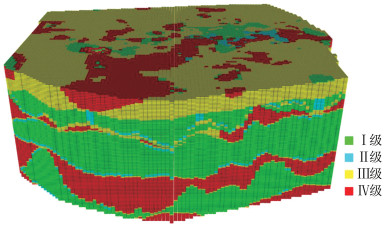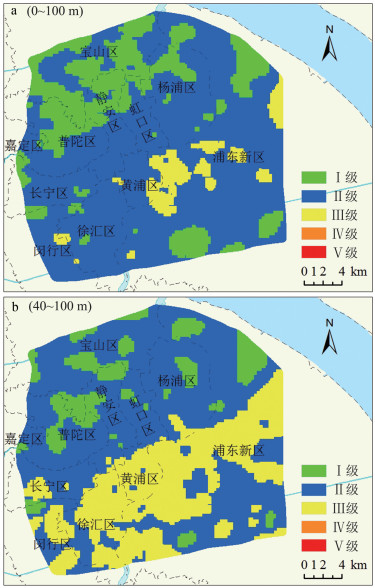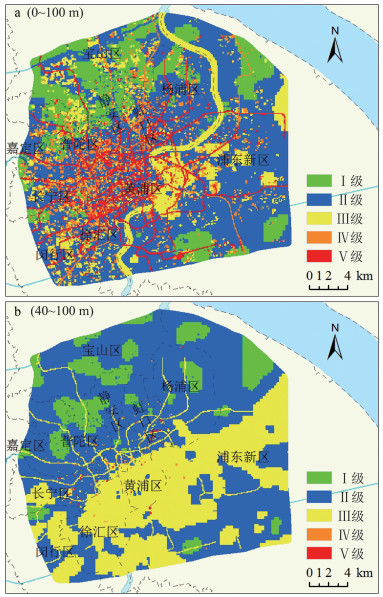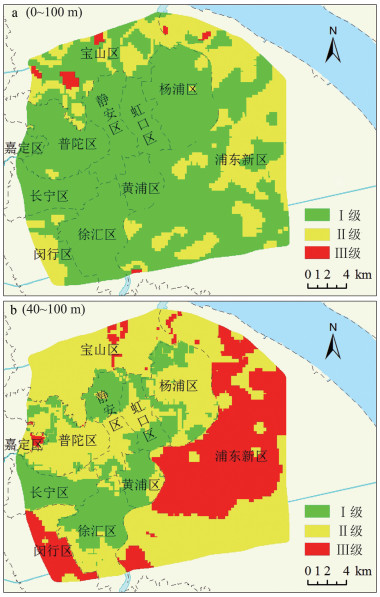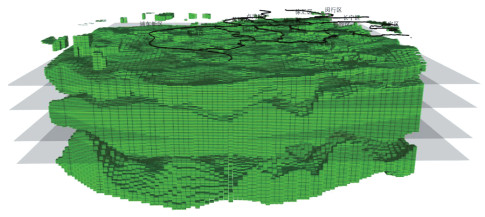Exploration on evaluation method of underground space resources carrying capacity of megacity: A case study of Shanghai
-
摘要:
“十二五”以来,特大型城市空间需求急剧膨胀与空间资源有限的矛盾逐渐凸显,地下空间的开发利用进入快速发展阶段。在此形势下,了解地下空间承载能力对地下空间科学规划和合理利用具有重要意义。从承载本底(反映地下空间资源禀赋与环境容量优劣程度)和承载状态(反映地下空间资源供容能力与经济社会发展的匹配程度)2个角度建立地下空间承载力评价指标体系,进行地下空间承载力评价的研究,为特大型城市地下空间的开发利用提供技术支撑。以上海中心城区为例进行评价,借助三维建模技术,立体展示地下空间资源承载能力。结果表明,上海中心城区地下空间资源承载能力总体较好,可进一步合理开发地下空间,提高空间利用率,缓解空间资源有限的压力。
Abstract:Since the "Twelfth Five-Year Plan", the contradiction between the rapid expansion of space demand and the limited space resources in megacities has become increasingly prominent.The development and utilization of underground space has entered a rapid development stage.Under this situation, understanding the carrying capacity of underground space is of great significance for scientific planning and rational utilization of underground space.From two perspectives, carrying background (reflecting the endowments of underground space resources and the pros and cons of the environmental capacity) and carrying actuality (reflecting the matching degree of the capacity of the underground space resource and the economic and social development), the evaluation index system was built, and evaluation of underground space carrying capacity was studied to provide technical support for the development and utilization of underground space in megacities.The central city of Shanghai with limited space resources was selected as a case to evaluate the underground space carrying capacity, and the bearing capacity of underground space resources was displayed in three dimensions with the help of 3D modeling technology.The results show that the carrying capacity of the underground space resources in the central city of Shanghai is generally good, and the underground space can be further developed rationally to improve the urban space utilization and alleviate the pressure of limited space resources.
-
Key words:
- megacity /
- underground space resource /
- carrying capacity /
- evaluation method
-

-
表 1 评价指标体系
Table 1. Evaluation index system
评价因子 评价指标 本底评价 状态评价 地下空间资源 可利用量占比 地下空间开发指数 质量差区体积占比 注:地下空间资源质量分级由岩土体特征、水文地质条件、不良地质条件等综合评价得出,反映地下空间资源开发本身地质体质量的好坏 表 2 地下空间资源评价的层次结构模型
Table 2. The hierarchical structure model for underground space resource evaluation
目标层 准则层 指标层 地下空间资源质量 基岩条件 基岩埋藏特征 基底稳定性 工程地质条件 土体埋藏特征 土体物理性质 水文地质条件 含水层特征 水文地质参数 不良地质问题 古河道 砂土液化 地面沉降 浅层气 地下空间开发现状 地下空间开发利用情况 其他 应急水源地 浅层地温能 地下固体矿产 地质遗迹 表 3 地下空间资源承载本底分级标准
Table 3. The grading standard of carrying background of the underground space
承载本底 Ⅰ Ⅱ Ⅲ Ⅳ V 可利用量占比 ≥90% [80%, 90%) [70%, 80%) [60%, 70%) <60% 质量差区体积占比 ≤20% (20%, 40%] (40%, 60%] (60%, 80%] >80% 表 4 地下空间资源承载状态评价分级标准
Table 4. The grading standard of carrying actuality of the underground space
承载状态 Ⅰ(盈余) Ⅱ(均衡) Ⅲ(超载) 地下空间开发指数 ≥60% [40%, 60%) <40% 表 5 地下空间资源承载能力等级
Table 5. Carrying capacity level of the underground space resource
承载能力等级 承载本底等级 Ⅰ Ⅱ Ⅲ Ⅳ V 承载状态等级 盈余 强 强 较强 中 较弱 均衡 强 较强 中 较弱 弱 超载 较强 中 较弱 弱 弱 -
[1] 张欢, 成金华, 冯银, 等. 特大型城市生态文明建设评价指标体系及应用——以武汉市为例[J]. 生态学报, 2015, 35(2): 547-556. https://www.cnki.com.cn/Article/CJFDTOTAL-STXB201502036.htm
[2] 钱敏蕾, 李响, 徐艺扬, 等. 特大型城市生态文明建设评价指标体系构建——以上海市为例[J]. 复旦学报(自然科学版), 2015, 54(4): 389-397. https://www.cnki.com.cn/Article/CJFDTOTAL-FDXB201504001.htm
[3] Bobylev N. Underground space as an urban indicator: Measuring use of subsurface[J]. Tunnelling and Underground Space Technology, 2016, 55(5): 40-51. http://core.ac.uk/download/pdf/82340075.pdf
[4] Wen D, Xin Z, Tianhe C. Index system and evaluation methods of resources and environment carrying capacity in principal function area division at provincial level[J]. Journal of Geo-Information Science, 2011, 13(2): 177-183. doi: 10.3724/SP.J.1047.2011.00177
[5] Chen Z L, Chen J Y, Liu H, et al. Present status and development trends of underground space in Chinese cities: Evaluation and analysis[J]. Tunnelling and Underground Space Technology, 2018, 71: 253-270. doi: 10.1016/j.tust.2017.08.027
[6] 王光宗. 杭州市地下空间开发利用与管理研究[D]. 首都经济贸易大学, 2017.
[7] 张茂省, 王尧. 基于风险的地质环境承载力评价[J]. 地质通报, 2018, 37(2): 467-475. http://dzhtb.cgs.cn/gbc/ch/reader/view_abstract.aspx?file_no=2018020324&flag=1
[8] 殷志强, 李瑞敏, 李小磊, 等. 地质资源环境承载能力研究进展与发展方向[J]. 中国地质, 2018, 45(6): 1103-1115. https://www.cnki.com.cn/Article/CJFDTOTAL-DIZI201806003.htm
[9] Zhu H, Huang X, Li X, et al. Evaluation of urban underground space resources using digitalization technologies[J]. Underground Space, 2016, 1(2): 124-136. doi: 10.1016/j.undsp.2016.08.002
[10] 叶菁, 侯卫生, 邓东成, 等. 基于可变模糊集的城市地下空间资源三维质量评价[J]. 资源科学, 2016, 38(11): 2147-2156. https://www.cnki.com.cn/Article/CJFDTOTAL-ZRZY201611013.htm
[11] 李小磊, 柳炳利, 陈国东. 四川省彭山区地质环境承载能力评价研究[J]. 国土资源科技管理, 2018, 35(3): 65-73. https://www.cnki.com.cn/Article/CJFDTOTAL-DZKG201803008.htm
[12] 中华人民共和国建设部. 岩土工程勘察规范[M]. 北京: 中华计划出版社, 2002.
[13] 中华人民共和国住房和城乡建设部. 高层建筑岩土工程勘察标准[M]. 北京: 中国建筑工业出版社, 2018.
[14] Shapira A, Simcha M. AHP-based weighting of factors affecting safety on construction sites with tower cranes[J]. Journal of Construction Engineering and Management, 2009, 135(4): 307-318. doi: 10.1061/(ASCE)0733-9364(2009)135:4(307)
[15] 吴立新, 姜云, 车德福, 等. 城市地下空间资源质量模糊综合评估与3D可视化[J]. 中国矿业大学学报, 2007, 36(1): 97-102. https://www.cnki.com.cn/Article/CJFDTOTAL-ZGKD200701019.htm
-



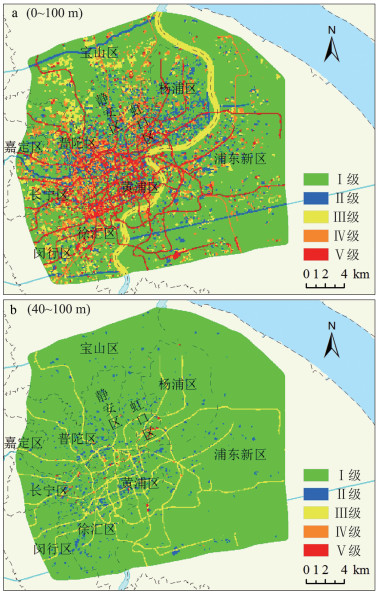
 下载:
下载:
